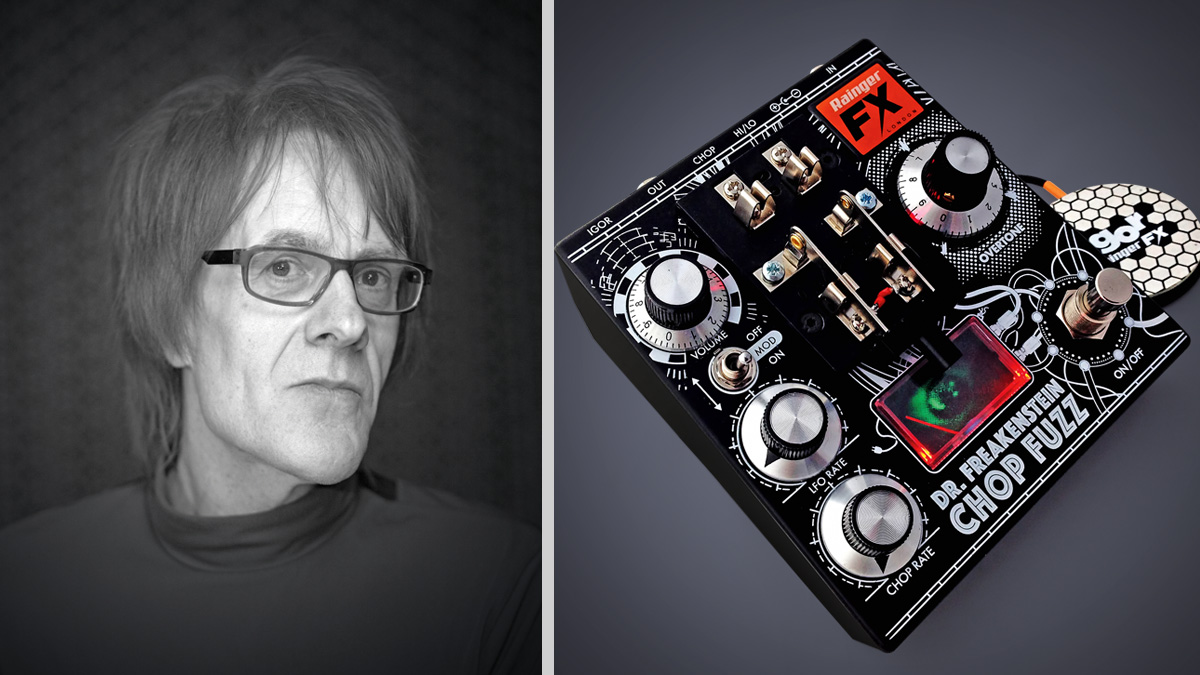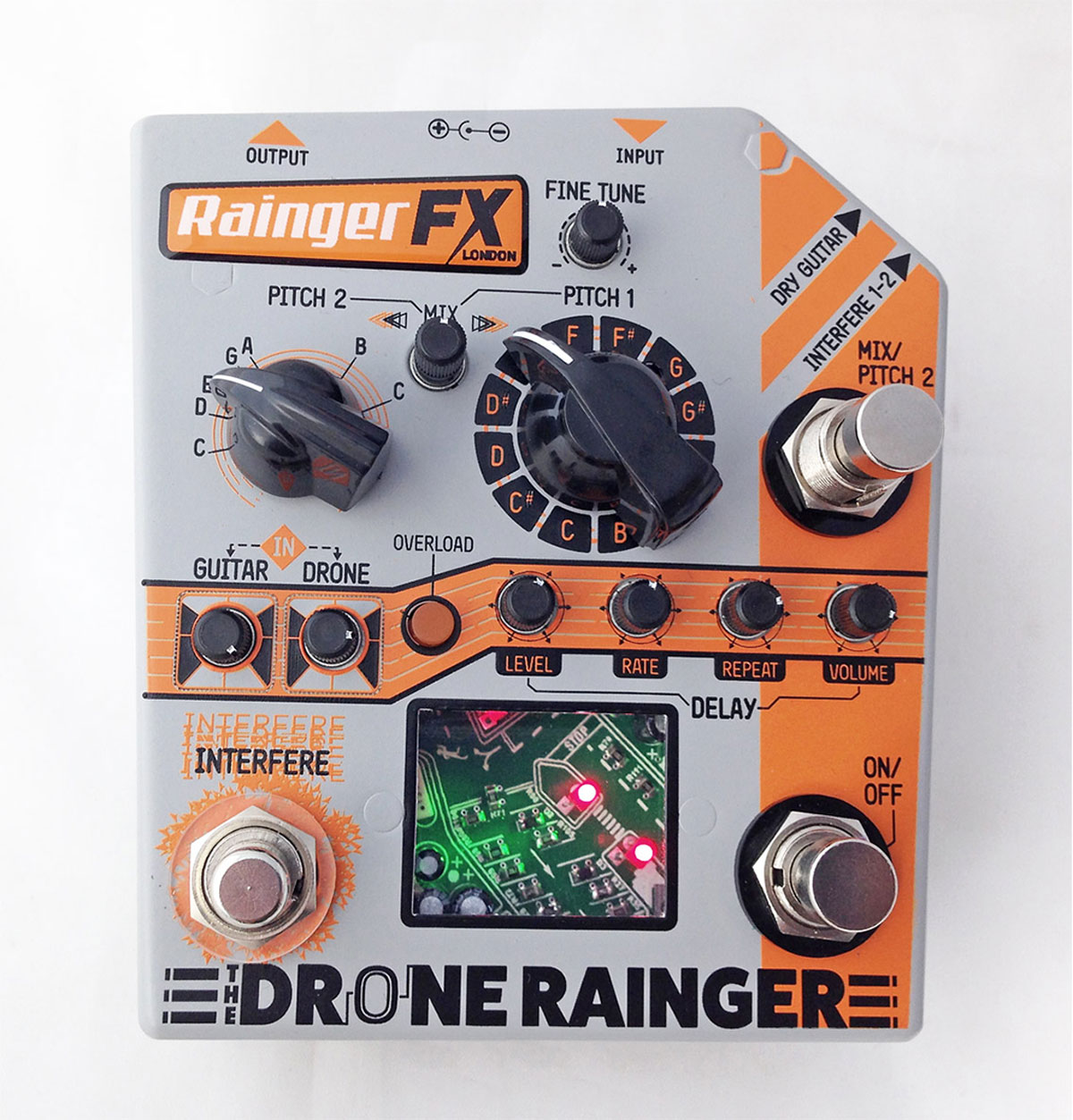David Rainger: "Do things the ‘wrong’ way if you like - then you’ll come up with the best stuff creatively"
The founder of London-based pedal mavericks Rainger FX talks tone and explains why stompboxes are here to stay...

1. What was the first pedal you built and how did the design come about?
“The first pedal I built was an Electra distortion [from geofex.com]. This was around 2002. I printed out the circuit, bought some parts and just soldered them together using a bit of cardboard to hold them in place. And it worked! I couldn’t believe it. I was amazed.
“The first Rainger FX pedal was the Freakenstein Fuzz. When I first started doing my own pedals, I was etching the board with chemicals and hand-drilling them. I took a few down to a shop in Denmark Street and they phoned me later that day asking for more! And it went on from there. It’s been full blast from 2009 onwards.”
2. What do you think it is that makes Rainger FX unique?
“It’s all about the sound. It has to be exciting and something that I’m totally into. We’re trying to make really unique sounds that are incredibly useful to every guitar player. Our vision is to help you write a hit record, whatever style of music you play, whether it’s inspiring you with a sound to write a new song, or a riff, or to just play a bit longer than intended.
“The sound is really important when it comes to giving you the momentum to write something new.”
3. What’s your best-selling pedal and why do you think that is?
Get The Pick Newsletter
All the latest guitar news, interviews, lessons, reviews, deals and more, direct to your inbox!
“At the moment, it’s the Drone Rainger. It’s a relatively recent pedal, which is a digital delay with two controllable analogue tone generators, or drones, built in. It looks complicated, but it’s a simple idea; it’s really just a digital delay, and you can mix in how much guitar and drones you want.
Joe Bonamassa bought one of my first pedals on Denmark Street. John Frusciante also got a few pedals early on
"I think it’s caught people’s imaginations. It sounds very cinematic and atmospheric, but you can use it in loads of different situations.”
4. Which notable players have used Rainger FX pedals?
“Carlos Alomar, Billy Gibbons, Noel Gallagher, Joe Bonamassa... In fact, Joe Bonamassa bought one of my first pedals on Denmark Street, which was very nice. John Frusciante got a few pedals early on. A friend of mine who’s also into techno, EDMX [Edward Upton], was hanging out with Frusciante and he said, ‘You should check out Rainger FX pedals,’ so he bought some.”
5. What’s your best tone tip?
“I think a lot of people are concerned if there’s a right or a wrong way to do things, and I think there really isn’t. Just be creative. Do things the ‘wrong’ way if you like. Find your own way to do it, because then you’ll come up with the best stuff.”

6. What new pedal triggers your GAS [Gear Acquisition Syndrome] the most?
“I’ve just bought a Mattoverse [Electronics] AirTrash pedal - it’s a whole load of fun. If you play one note, it makes it seem as if that note is alive somehow. And the interesting thing about it is that it makes me play slower.
"When I’m listening to the notes, I’m thinking, ‘This is a good thing, surely?’ Also, I think Death By Audio are a hugely inspiring company. They’re so brave with their sounds. The boldness of it all is just fantastic.”
7. What’s your favorite vintage pedal and why?
“It has to be the Sustainiac by Maniac Music. When you play a note, you get this feedback loop where your guitar starts vibrating, and it’s exactly like touching the amplifier with the headstock. You get immediate feedback, except you can control its intensity and range.”
8. If you had a three-pedal ‘desert island’ pedalboard, what would be on it and why?
You’d think Tom Morello's pedalboard was a vast field of machinery, but it’s pretty basic. He did amazing stuff with it
“I’d have a Freakenbender [fuzz], which is a collaboration we did with Colorsound. I’d also have a Boss DM-2 [Delay] because it always sounds good. And I’d have a Boss CS-2 [Compression Sustainer]. I haven’t turned that thing off for 25 years!”
9. What are your favorite effects pedal moments to be heard on record and why?
“I immediately think of the Rage Against the Machine records. [Tom Morello] is so imaginative. You’d think his pedalboard was a vast field of machinery, but it’s pretty basic. He did amazing stuff with it.”
10. What problems have effects designers yet to crack?
“I think the main problem is that a human being has to interface with it, so you have a huge list of requirements with regards to how the pedal is laid out. We’re trying to make things smaller and smaller, but in the end, you have to be able to use it with your foot. I don’t think we’ll ever be able to get around that!”
“I always felt like that record could have been better if we had worked on it some more”: Looking for a blockbuster comeback album, Aerosmith turned to Van Halen producer Ted Templeman. For Joe Perry, it served as a learning experience
Guitar World Discussion: Who is the most underrated guitar player of all time?










